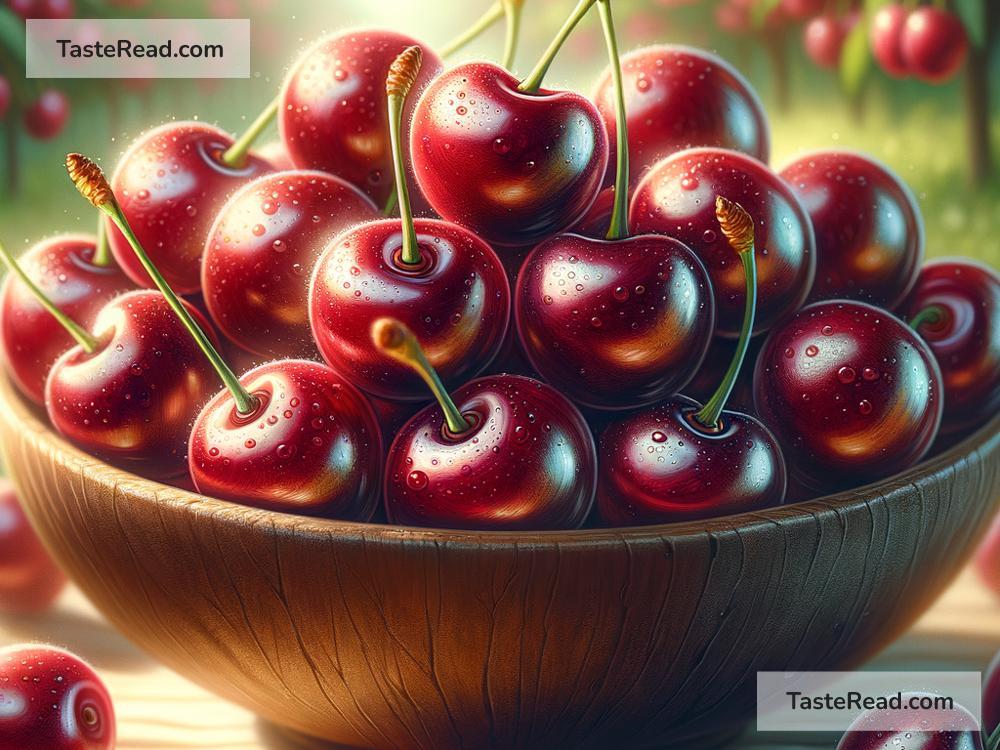Why Cherries Are So Vibrant in Color
Cherries are not just delicious; they’re also beautiful to look at. Their bright red or deep purple hue makes them stand out in the fruit section at the grocery store. But have you ever wondered why cherries are so vibrant in color? It turns out there’s a fascinating science behind it, and it’s connected to how cherries grow, their health benefits, and even how they attract animals to help spread their seeds.
Let’s dive into the colorful world of cherries and learn why their colors are so eye-catching.
The Role of Pigments
The bright color of cherries comes from natural pigments found inside the fruit. These pigments are called anthocyanins. Anthocyanins are a type of plant compound that gives fruits, flowers, and even some vegetables their red, purple, or blue colors. In cherries, these pigments are responsible for their vibrant shades of red.
Anthocyanins aren’t just about looks—they serve an important purpose. They help protect cherries from damage caused by sunlight, heat, and other environmental challenges. Think of them like sunscreen for the fruit! These pigments absorb light and help cherries stay healthy while growing on the tree.
How the Environment Affects Cherry Color
The color of cherries isn’t always the same. Some cherries are bright red, while others are darker, almost black. This difference in color happens because of various factors, including the type of cherry, where it’s grown, and the amount of sunlight it gets.
For example:
– Sweet cherries, like Bing cherries, often have a deep purple or dark red color.
– Tart cherries, like Montmorency cherries, tend to be lighter red.
Sunlight plays a big role in how much anthocyanin a cherry produces. More sunlight leads to a richer, darker color. Soil quality, water availability, and temperature also affect how vibrant a cherry’s color will be.
Why Cherries Are Red?
The red color of cherries isn’t random—it’s a survival strategy used by the tree. Bright colors like red and purple attract animals such as birds and insects. Why is this important? When animals eat cherries, they spread the seeds by carrying them to new locations. This allows cherry trees to grow in different places. Essentially, the vibrant colors act as a natural advertisement, saying, “Come eat me!”
It’s not just cherries that use this strategy. Many fruits, like strawberries, blueberries, and apples, also rely on stunning colors to catch the attention of animals. The brighter the fruit, the better its chance of being eaten and spreading its seeds.
Benefits of Anthocyanins for Humans
The anthocyanins that make cherries vibrant aren’t just good for the fruit—they’re also good for us! These natural pigments are packed with antioxidants, which help protect our bodies from damage caused by harmful molecules called free radicals.
Here are some health benefits of the anthocyanins found in cherries:
1. Reduces inflammation: Anthocyanins help calm down inflammation in the body, which is linked to diseases like arthritis.
2. Boosts heart health: These compounds may lower the risk of heart disease by improving blood flow and reducing cholesterol levels.
3. Improves brain function: Studies suggest anthocyanins may boost memory and protect the brain from aging.
4. Supports recovery after exercise: Tart cherry juice is popular among athletes because it can reduce muscle soreness and help the body recover faster.
When you eat cherries, you’re not just enjoying a sweet snack—you’re also helping your body stay healthy.
Nature’s Color Palette
The vibrant shades of cherries are part of nature’s complex system. Trees rely on colors, scents, and flavors to ensure their survival. Cherries’ bright colors don’t just make them look beautiful; they serve a greater purpose that’s tied to the cycle of life. From attracting animals to protecting the fruit, anthocyanins play a crucial role in making cherries what they are.
Interestingly, the color intensity of cherries can also vary depending on their ripeness. When cherries are fully ripe, they tend to be darker and richer in color. This signals to animals—and humans—that the fruit is ready to eat and tastes the best.
A Feast for the Eyes and Body
Cherries are a wonderful example of how nature combines beauty with function. Their vibrant colors are not only a feast for the eyes but also a sign of their nutritional value. Whether you’re snacking on fresh cherries, sipping tart cherry juice, or enjoying a cherry pie, you’re benefiting from the anthocyanins that make them so striking.
The next time you bite into a cherry, take a moment to appreciate its color. That bold red or deep purple is the result of a fascinating process that helps cherries survive and thrive. Plus, it’s a signal that you’re eating something packed with goodness for your body. Bright, beautiful, and beneficial—that’s what cherries are all about!
So go ahead, grab a handful of cherries, and enjoy their sweet taste, vibrant color, and amazing health benefits. Mother Nature sure knows how to make food both beautiful and healthy!


